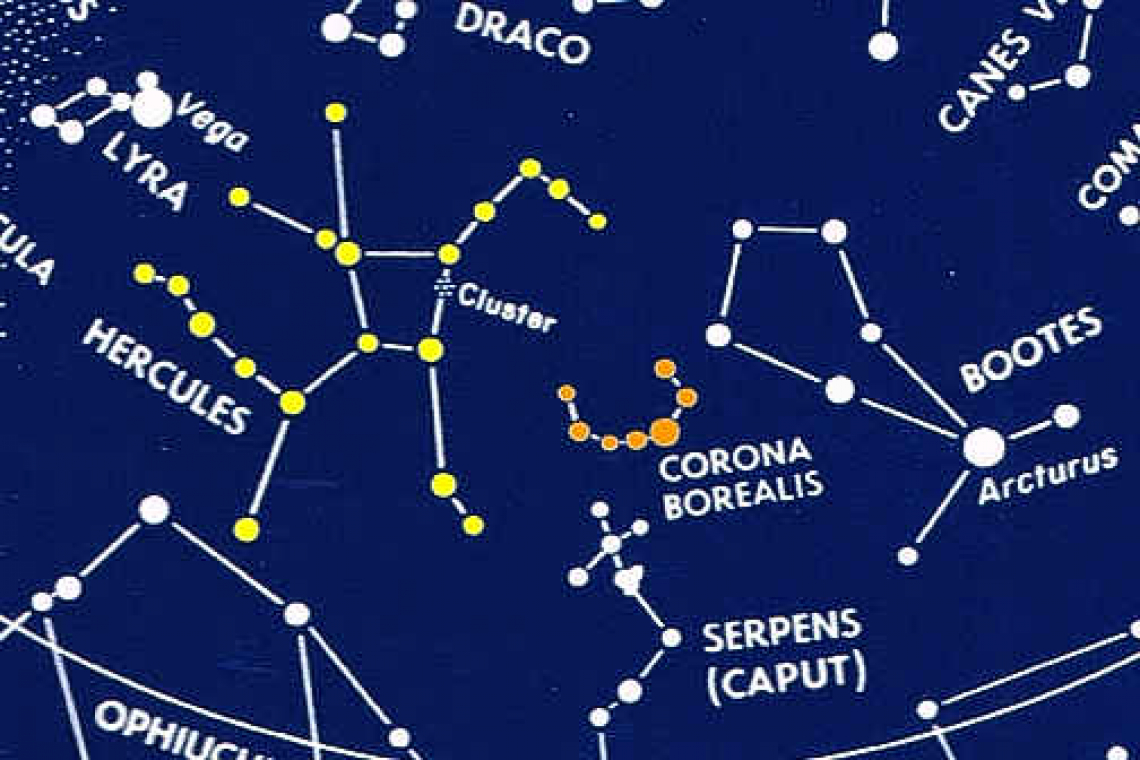~ St. Maarten’s Backyard Astronomy for November 5 – 7, 2021 ~
Sun rises at 6:13am
Sun sets at 5:37pm
Lunar phase: 1st Quarter, waxing crescent
Moon rises at 7:59am, Saturday
Moon sets at 7:23pm, Saturday
This weekend, moon beams are sure to be faint and fleeting, although moonshine may be on hand (that’s illegal whiskey that was once brewed by my ancestors, but that is another tale). But the moon, our natural satellite, will offer only a sliver of pearlescent sheen. Not only that, but the thin crescent sets soon after the sun, leaving the long winter night to the realm of the stars and planets. All the better for those of us taking in the night air and seeking delight in the constellations.
If you are out just after sunset, find the darkest vantage point possible with a wide view of the southern, western and northern horizons. As the moon sets by 7:30pm, look just up and to the left from the moon and find the planet Venus. Currently holding court as the Evening Star, Venus is a world of intense atmospheric pressure and heat. Venus will be found among the stars of the constellation Sagittarius. Recall Sagittarius is imagined as a Centaur but to our modern eyes, we describe 10 stars in the shape of a teapot, at present Venus sits just above the spout.
We will attempt now to find two circlets of stars, the two crowns in the heavens, one in the southeast, and one in the southwest. Corona Australis, or Southern Crown, is located just to the left of Sagittarius. I personally see a bracelet rather than a crown, what do you think? The second ringlet of stars is just a bit north of due west, and quickly approaching the horizon by mid evening. Corona Borealis, or Northern Crown, hangs just under the large constellation of Hercules.
Hercules has a square-ish centre with four limbs extending outward like a galloping four-legged spider. He sits in the sky at the same height as the Little Dipper, Ursa Minor, which can be found due north, as always.
Jupiter and Saturn are still visiting the lonely star Formalhaut in the deep southern sky, edging towards the west as the night progresses. In fact, the moon, Venus, Saturn and Jupiter can be observed in the evening hours forming a straight line in the sky, from the western horizon to the southern mid-high sky. This is the “Plane of the Ecliptic” which is the solar system’s basic shape. All the planets’ orbits are within a few degrees of a flat plane, including Earth!
Mars, the red planet, and mythological God of War, is currently on the opposite side of the Solar System, which means from our perspective, Mars is behind the Sun! He has been on this hero’s journey for months now and soon we will observe Mars emerge back into our night sky.
As the week progresses, spend a moment or two keeping track of the moon, as the crescent shape fills out and the moon climbs higher in the sky at sunset. In two weeks, the full moon will rise as the sun sets, and the night will be full of moon beams and probably plenty of moonshine as well.
Thank you for keeping up with the Night Sky articles designed for St. Maarten sky viewing. If you are out later on in the week, each star rises about four minutes earlier each day than written here, and the moon rises 50 minutes later. Night Sky is researched and compiled by Lisa Davis-Burnett. Earthsky.org is a key resource for information and images. Questions or comments? Email This email address is being protected from spambots. You need JavaScript enabled to view it..







